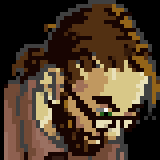Steve’s Gaming Escapades from 2013 (Part 2)
Wow. When I started reviewing the games I’d played in 2013, I hadn’t realized at first just how many there were. What I thought would be spat out in a little more than an hour has turned into a two-parter. So what were the other games that I played in 2013? Buckle-up there pardner, I’m about to tell you.
It turns out my count was a little off last time. I’ve played a bit more than 28 games. Whilst you can see the first 14 that I played in the previous post, here’s the rest of them:
- Shining In The Darkness (PS3)
- Spy vs Spy (NES)
- Ni No Kuni (PS3)
- Kingdom Hearts Birth By Sleep (PSP)
- Kingdom Hearts Dream Drop Distance (3DS)
- Space Quest 4 (PC)
- Metal Slug 3 (Neo-Geo)
- Fez (PC)
- Boom Blox (Wii)
- Police Quest 2 (PC)
Shining in The Darkness (PS3)
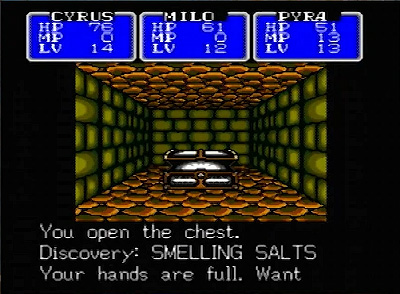 Time Played: ~6 hours
Time Played: ~6 hours
This is a game that was originally released in 1991 for the Sega Mega Drive. Shining in the Darkness (which I own as part of Sonic’s Ultimate Genesis Collection but is also available on Steam and on the Wii Virtual Console) is a game that was ground breaking for its time. It was one of the first RPGs released for the Mega Drive, and began the Shining series which has covered many consoles and genres. It has aged extremely poorly.
In it, you to navigate a first person labyrinth with random encounters collecting treasure and levelling up until you are able to fight a boss to unlock more of the dungeon.
Liked: The music was pretty catchy. Masahiko Yoshimura did the music for both this and Shining Force, and it’s got a great marching feel to it. Definitely the high point to the game. The menu system is also pretty well done. While it’d be better to have more helpful tips for what items do, I like the system for menu navigation. It makes sense that they carried this on into other games in the series.
Disliked: The labyrinth is very boring. It’s tough to navigate due to the same-ness of all the artwork, and it’s just not fun to have to push your way through. On top of that, there’s a steep difficulty to the bosses which means you’re going to be walking circles around the labyrinth intentionally triggering random encounters so that you can grow in strength and gather enough wealth to buy better equipment. The game is 90% grind, which is frustratingly boring in this day and age.
Score: ♥♥♡♡♡♡♡♡
Spy Vs Spy (NES)
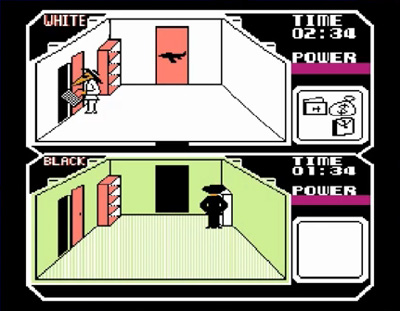 Time Played: 12 minutes
Time Played: 12 minutes
Spy vs. Spy was a game first published by First Star Software in 1984 for the Atari 8-bit family, Commodore 64 and Apple II computers. It was an innovative two-player, split-screen game, based on MAD Magazine’s long running cartoon strip, Spy vs. Spy, about the slapstick antics of two spies trying to kill each other with improbably complex and elaborate traps and weapons.
Liked: I actually hated the game. Absolutely hated it. But there are people who do like it. Now, part of my problem with it may be that I hadn’t played with a second person, but with the CPU. It’s a multi-player game, and it could perhaps be fun to play against a friend.
Disliked: I actually completely hated playing this game. Every second that I played, the music which has a loop in it that repeats every 5 seconds was driving more and more insane. I hated it. It made me angry. Do not recommend.
Score: ♥♡♡♡♡♡♡♡
Ni No Kuni (PS3)
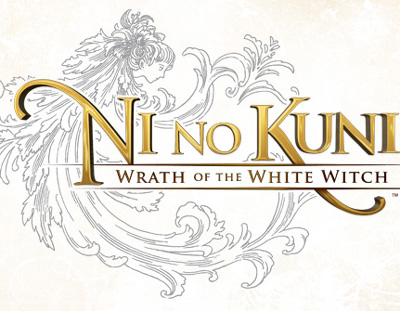 Time Played: ~5 hours
Time Played: ~5 hours
Studio Ghibli’s foray into making an old school JRPG for the PS3 had lots of people excited. Ghibli has made a lot of great movies, and there is certainly an audience for old school Dragon Quest and Final Fantasy style games.
Liked: The music was great. Joe Hisaishi is a solid member of Ghibli, and it was brilliant to keep him involved.
Disliked: So my biggest gripe is one that I don’t have an HDTV with which to enjoy the game on. I have an old school CRT still, and it renders the game almost unplayable. Seeing enemies on the world map is extremely difficult, as is reading any of the text. It’s a game that’s designed for HD, and those of us who are still in the SD generation are shit out of luck. I would have played more of the game if it were playable… however I also felt like I was a child that was being spoken down to. Maybe it’s because I’ve been a gamer since the early NES days… but the game takes a real hand-holding approach that over explains every little detail. The majority of the time I played, was spent being told how to open menus, and how to buy things, how to attack enemies, and how to train my Pokémon familiars. I didn’t care for the familiar system. I didn’t like that the main character is an incredibly slow individual that has to have everything explained in excruciating detail by a character with a lantern as part of his head. I really didn’t like their decision to try and maintain usage of in-game graphics for cut-scenes. The classical animation was beautiful, and then scenes which were important enough that the higher quality stuff should have been used, were reduced to in-game graphics. Voice acting would sometimes be there, and sometimes not be there. It seemed arbitrary. It’s a game that maybe I can appreciate some day when I have a HDTV… but there were a lot of little frustrations that also made it a bad experience. Honestly? I’d recommend you pick up Final Fantasy IX on the PSN before I’d recommend Ni No Kuni.
Score: ♥♥♥♡♡♡♡♡
Kingdom Hearts Birth By Sleep (PSP)
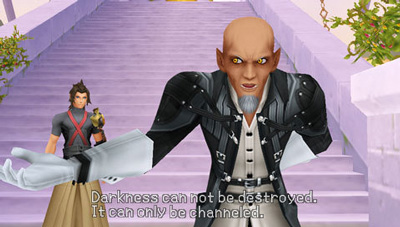 Time Played: ~40 hours
Time Played: ~40 hours
Kingdom Hearts is a fuckfest of story that makes absolutely no sense. Birth By Sleep is another addition to the family which this is true. Shit is confusing as ever in this particular game, but it is probably my favourite in the series. If you’re new to the series, It’s as good of a place as any to start. It’s the first in the time line, and the writers were attempting to clarify some stuff that was incomprehensible in past games. It’s an action rpg, that has fun combat mechanics and a story that will get you interested in what happens next even if you don’t understand.
Liked: The combat feels more refined. I like that because it’s on a portable system, I’m able to turn it off at any time and resume later rather than getting to a “save point” which is the norm on console rpgs. The voice acting is great, the art design fun, the music is awesome. Seriously, Yoko Shimomura is the man. The cut scenes are well done, and the Disney character interaction is kept to a minimum here. I like that this feels more mature than past entries to the series, and I highly recommend it. I really enjoyed that they removed the mini-game component of visiting different worlds in this game. There was also a great feel to all three of the different main characters with a story that comes together as you play each of their scenarios.
Disliked: I have no clue what anything is, even after spending a few hours on wikis researching. This series really does its job in obfuscation. Also… come… on. How could the characters be so dumb that they don’t see that this blatantly obvious villain is a villain?
Score: ♥♥♥♥♥♥♥♥
Kingdom Hearts 3D: Dream Drop Distance (3DS)
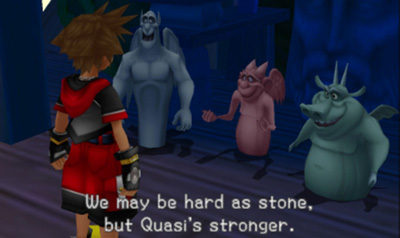 Time Played: ~8 hours
Time Played: ~8 hours
The latest entry to the Kingdom Hearts franchise was released for the Nintendo 3DS in July 2012. I managed to pick it up during a Boxing Day sale in 2012 which nabbed me a Nintendo 3DS along with this game for $120 CAD. So far, it’s the only 3DS game I’ve picked up… though I’ve had my eye on Fire Emblem since it came out. At any rate it’s part of a franchise I love, and in it you get to play as two of the main characters from the original game: Sora and Riku. As is tradition, along the way you’ll encounter lots of Disney characters, but unlike the other games you will be responsible for creating, feeding, petting, and playing with monsters to help you on your quest.
Liked: The graphics seem pretty ok, and the music and voice acting are typical Kingdom Hearts quality.
Disliked: The story in this makes no fucking sense. You have to do each world twice, once as each character. You’ll generally be doing the same areas in each world so it feels pretty stale. They tried to give you a fast parkour type movement to be able to blaze through zones… but that should have been their first clue that the game they were designing was bad. You’ll also be encountering the same characters regardless of who you’re playing as… but none of the characters seem to serve any sort of a purpose other than Disney branding. There doesn’t seem to be a reason to encounter Quasimodo as Sora and then again as Riku. Having these split dimensions doesn’t really make anything extra interesting. The forced mini-game before you can do each world is annoying. The pet interaction is absolutely vile. I don’t know if I’ll ever push myself to play this game any more than I already have. While I’d like to know the plot, and I was looking forward to playing as Riku… it just… it’s not worth it.
Score: ♥♥♡♡♡♡♡♡
Space Quest 4 (PC)
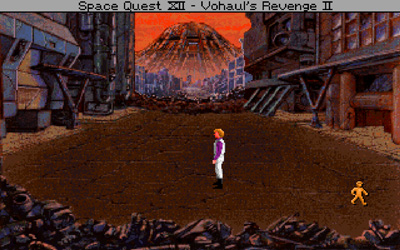 Time Played: ~1.5 hours
Time Played: ~1.5 hours
If you read my last set of reviews, you must know that I’m a fan of the old Sierra games. In fact, we’re going to talk about some of the others in this article too. Space Quest 4 came out at a time when there was a big push for the Adventure games to become streamlined. It came out in 1992, had full speech support, a narrator, 256 colours, and a fully mouse-driven interface. It had rotoscoped animation and a budget of over $1 million. It was critically well reviewed at the time, getting near perfect scores. Apparently there was some bad blood that developed between the game’s two creators Mark Crowe and Scott Murphy shortly after this game’s development and after the project, Murphy split from the franchise. You can read a bit more about that here.
Liked: It isn’t Final Fantasy VIII.
Disliked: Ok… so I realize that there were lots of people that loved this game. I’m not one of them. I hated almost every single thing about it. I hated the artwork. I hated that they crossed the axis in some of the opening animation. I hated the story. I hated the switch from text-parser to mouse as I felt that it took away the creativity of being able to test doing whatever you want. It also meant that trying to do anything was very clumsy. There’s a sewer grate early in the game that you need to get into. I attempted to do it, however as best as I can tell, the mouse cursor must not have been clicking the right pixel as the narrator told me I was wasting my time trying to do anything with what I clicked on. So I then spent a ton of time walking around in circles trying to figure out what on earth to do. Eventually I try the sewer again, and bingo that’s what I needed to do. That was the advantage of the text-parser. When you have a giant hand, or mouth, or eye as your mouse cursor, you have no idea if you’re clicking on the right set of pixels. The music in the opening also makes me want to stab a cork-screw into my ear drums. I don’t know if the game gets any better once you leave the first zone. I haven’t successfully left the first zone. I hate the game and never want to touch it again. It was agony opening it long enough to get that screen grab up there. I forgot just how much I hated this game until writing this. Thanks a lot.
Score: ♡♡♡♡♡♡♡♡
Metal Slug 3 (Neo-Geo)
Time Played: ~1 hour
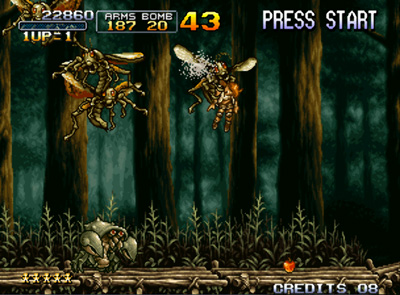 Metal Slug 3 is a run and gun video game developed by SNK. It was originally released in 2000 for the Neo-Geo MVS arcade platform. I can’t think of another game that has as beautiful pixel art. The game has really simple mechanics. You run, and you shoot. You can aim in different directions, get power ups, and you die really really easily. It was designed as a typical arcade game that will soak up your quarters before you realize you’ve spent them.
Metal Slug 3 is a run and gun video game developed by SNK. It was originally released in 2000 for the Neo-Geo MVS arcade platform. I can’t think of another game that has as beautiful pixel art. The game has really simple mechanics. You run, and you shoot. You can aim in different directions, get power ups, and you die really really easily. It was designed as a typical arcade game that will soak up your quarters before you realize you’ve spent them.
Liked: The animation is absolutely awesome. So many frames of animation. The designs are all great, the backgrounds are beautiful, effects also beautiful. The sound and music is all great. It’s a simple game to get into and since it’s not the actual arcade version you can keep getting lives whenever you want without the stress of it emptying your bank account.
Disliked: There really wasn’t much strategy/difficulty to the game. It was designed to eat your quarters. You die really easily, and you will die frequently unless you’ve grown to memorize where everything is. Had I played this in the arcade, it would have made me poor. I would have liked maybe a little more strategy to the game.
Score: ♥♥♥♥♥♥♥♡
Fez (PC)
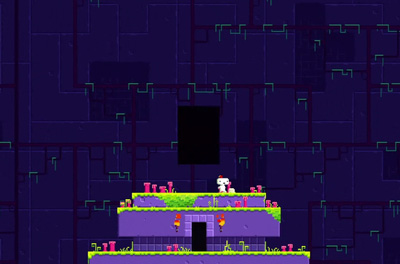 Time Played: ~20 hours
Time Played: ~20 hours
So Fez is one of Canada’s most (in)famous indie games. The game designer, Phil Fish has been notoriously outspoken, which was fantastic for getting exposure to his game, but has also brought him lots of grief from angry gamers around the globe. Phil has gone mostly silent since the end of July when he decided that enough was enough with dealing with the stress of being a public figure, but the programmer responsible for the game (Renaud Bédard) has continued to release patches. Word on the street is that we’ll eventually be seeing a release for PS3/PS4/PSVita. Fez is a wonderful platformer game that takes place (mostly) in 2D space. It takes place in a 3D world however, and the puzzle mechanics revolve around revolving your camera to change the layout of the 2D space. There are no enemies to fight, and death is but a slap on the wrist.
Liked: The mechanics of the game are great. The revolving camera mechanic is a novel approach and helps to put a new spin on 2D platforming. The controls feel very nice and smooth, and it really feels fun to play due to the light heartedness of the characters and world. The world actually has fantastic depth to it. There is writing and speech all over the place that is in a foreign language that is up to you, the human playing the game to decipher using pen and paper. Once you have decrypted the language, it’s fun learning more about the world. The game is very themed on dimensionality and if, like me, you get caught up in researching the game on wikis online, you’ll probably pick up a thing or two about science that you didn’t already know. Disasterpeace‘s music is a perfect fit for the game.
Disliked: That gamers gave Phil Fish such a hard time that we may never see a Fez 2.
Score: ♥♥♥♥♥♥♥♥
Boom Blox (Wii)
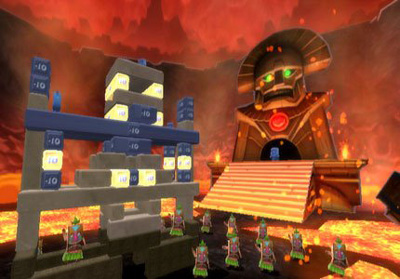 Time Played: ~1 hour
Time Played: ~1 hour
Apparently Steven Spielberg had a burning desire to make a video game. It wouldn’t be anything like the cinematic gold of E.T. or Jurassic Park though, it would be something a little more low key. Boom Blox would instead be more like playing Jenga. Or rather like playing Jenga by throwing marbles at a constructed Jenga tower. The idea is that you use your wiimote to throw stuff at the blocksx in the game. Whoever knocks over the most points wins. Not bad for a simple party game.
Liked: It’s pretty simple way to pass time with friends. Nothing particularly challenging with the game mechanics, and it seemed to respond pretty intuitively.
Disliked: Nothing really. The game is pretty simple, and works as well as having some friends over and playing Jenga, or some other party game. Playing by yourself would be rather uneventful.
Score: ♥♥♥♥♥♡♡♡
Police Quest 2 (PC)
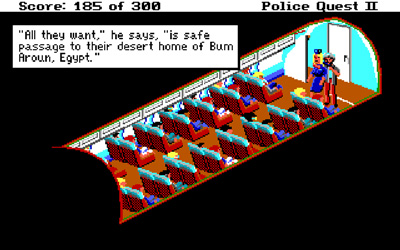 Time Played: 2.5 hours
Time Played: 2.5 hours
Police Quest was part of the Sierra adventure series of games that began production in the 80’s and continued into the 90’s. In particular, this series was created by former police officer Jim Walls, and follow the adventures of Sonny Bonds. Police Quest’s rules rely heavily on standard operating procedures of California police officers. Equipment must be properly cared for, you can only point a gun at someone if it is legal to do so, and you need to make sure to follow the book at crime scenes. It’s a little more strict than many games are, however it has a logic that is explained in the game’s manual. I’d loaded up the first in the series, however as soon as I saw that it was a remake which made use of the same mouse-only engine that was used for Space Quest 4, I immediately shut it off and went onto the second game in the series. By this point in the series, Sonny had moved into the homicide division. We’re expected to already be somewhat familiar with the characters in the game since it is a sequel.
Liked: I enjoy the SCI0 engine. This is what was used for PQII, Space Quest III, Quest for Glory, and King’s Quest 4, amongst others. The story is pretty neat, and it takes place in a variety of locations. Despite the flaws listed below, it’s got some entertainment value to it that will make it worthwhile if you’re itching for a text-parsing adventure game that you may not have already played.
Dislike: The rules of being a police officer makes the game a little strict. If you are in your car, you need to radio in where you’re going. If you get your gun, you need to make sure you take it to the firing range, get the proper gear, and calibrate it. It’s not particularly intuitive what you need to do at all times, and thus it’s difficult to get through without resorting to online guides. This strictness is also enforced though the game’s anti-piracy feature which will require you to read the manual in order to identify the answer to a random identification question necessary to start the game. I was caught off guard by the hijacker scene pictured in the screen grab I posted with the review. Apparently you’ll need to try Police Quest 4 if you really want a racist experience.
Score: ♥♥♥♥♥♡♡♡



































